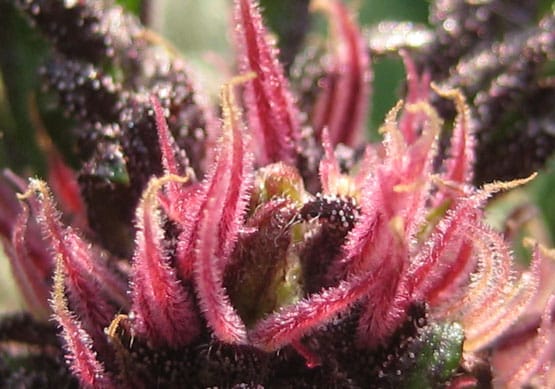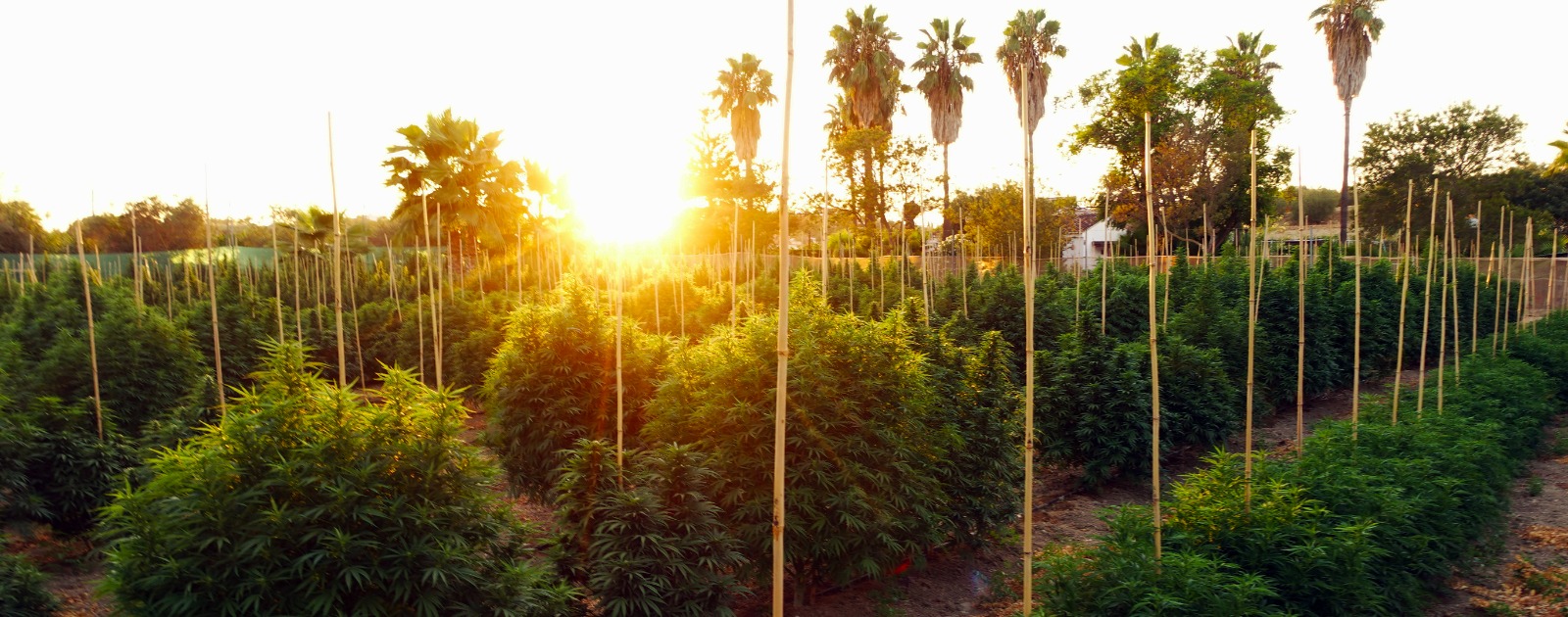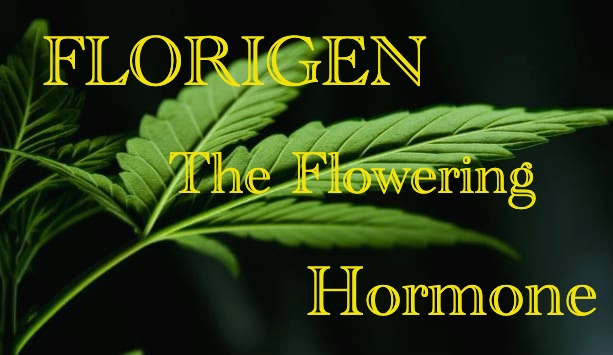The Discovery of Florigen
In 1865, a German scientist named Julius von Sachs discovered that when he transferred sap from a flowering plant to a non-flowering plant, the non-flowering plant also began to bloom.
This phenomenon occurred even when the two plants were of different species. Unfortunately, despite his efforts, he was never able to isolate the substance responsible for this flowering.
Many scientists after him also tried in vain to isolate the substance, which we now call Florigen, leading to its status as a kind of mystery. It even reached a point where the question was not only what the substance actually was but whether it even existed at all.
After many years, one of the greatest mysteries in plant biology was finally solved.
Florigen
As previously mentioned, Florigen is the key hormone that triggers the transition from vegetative growth to generative growth. This hormone is produced in the leaves and travels to the growth points, where it initiates flowering.
Cannabis cultivation is a complex and dynamic practice that requires growers not only to understand the basics of plant growth but also to have in-depth knowledge of the biological and environmental factors that govern the plant’s life cycle. One of the most critical transition phases in cultivation is the shift from vegetative growth to generative growth.
This transition is crucial in determining the final yield and quality of the cannabis flowers. In this article, I delve deeper into the biological processes, hormonal regulation, and advanced techniques such as crop steering, all of which contribute to a successful transition to the flowering phase.
The Vegetative Phase, The Building Blocks of a Healthy Harvest
The vegetative phase is when the cannabis plant directs its energy towards the growth of leaves, stems, and roots.
This phase begins immediately after germination and is essential for building a robust plant structure. During the vegetative phase, photosynthesis is at its peak, with the plant converting light into the energy needed for further growth. In this phase, the demand for nitrogen is particularly high, as this mineral is crucial for the development of plant tissue.
Growers focus on optimizing environmental conditions during this phase, such as light intensity, temperature, humidity, and nutrients, to ensure that the plants can accumulate enough energy and reserves for the upcoming flowering phase.
The length of the vegetative phase can vary depending on the cultivation goals and the specific characteristics of the cannabis strain. Some growers choose to extend this phase to produce larger plants, which can later lead to higher flower production.

Hormonal Regulation
The transition from vegetative to generative growth is primarily driven by a complex interplay of plant hormones, often referred to as the “invisible directors of growth transitions.” These hormones regulate various growth processes and are essential for the timing and direction of the plant’s growth.
• Florigen
This hormone is responsible for initiating flowering. It is produced in the plant’s leaves in response to changes in the light cycle and moves to the apical meristem, where it prompts the plant to bloom. The production of Florigen is closely tied to the photoperiod, which is why many growers reduce light hours to stimulate flowering.
• Gibberellins
Gibberellins are responsible for the stretching of stems and leaf growth, characteristics typical of the vegetative phase. By managing the level of gibberellins, growers can extend or shorten the vegetative phase depending on their objectives. Controlled reduction of gibberellins can, for example, help prepare the plant for flowering by limiting vegetative growth.
• Abscisic Acid (ABA)
This hormone plays a role in stress responses and can contribute to the transition to flowering by helping the plant cope with environmental stress, such as drought or cold. By simulating these conditions, growers can promote flowering.
Crop Steering, Precision Management for Optimal Growth Control
Crop steering is an advanced cultivation technique that allows precise control over the growth of the cannabis plant by adjusting environmental conditions and nutrient strategies. This technique is rapidly gaining popularity, especially in commercial cultivation environments, as it enables growers to optimize both vegetative and generative growth for maximum yield and quality.
• Light Manipulation
One of the most effective ways to guide the transition to flowering is by adjusting the light cycle. Exposing the plant to a shorter duration of light, such as a 12/12 light/dark schedule, simulates the natural decrease in daylight typical of the late growing season, prompting the plant to bloom. This process, known as photoperiodism, is crucial for regulating the production of Florigen and initiating flowering.
• Irrigation and Nutrition
Manipulating irrigation strategies and nutrient concentration also plays a significant role in crop steering. By increasing the electrical conductivity (EC) of the nutrient solution and reducing the amount of available water, growers can lightly stress the plant, signaling it to flower. This controlled stressing of the plant helps redirect its energy from vegetative growth to flower production (generative growth).
• Temperature and Humidity
Simulating a late-summer environment by lowering temperature and reducing humidity can also help speed up the transition to flowering. These environmental adjustments mimic the natural conditions in which the plant prepares for reproduction.

The Importance of Balance: Optimizing the Transition
Successful cultivation requires a delicate balance between vegetative and generative growth. A premature transition to flowering can result in a plant that is not large enough to support a high yield, while an overly extended vegetative phase can lead to excessive vegetative growth, compromising flower quality.
By finding and maintaining the right balance, growers can ensure that their plants perform optimally, with a strong vegetative foundation leading to abundant and high-quality flowers.
Practical Applications and Strategies
The application of crop steering and the management of hormonal signals require an in-depth understanding of the specific needs of the cannabis plant at each stage of its life cycle. Here are some practical strategies that growers can apply:
• Early Vegetative Growth
Growers should focus on promoting healthy and vigorous vegetative growth by administering the right amount of nitrogen and optimizing environmental conditions for rapid growth.
• Transition Period
During the transition from vegetative to generative growth, growers should gradually adjust the light cycle and reduce nitrogen levels in the nutrient regimen while increasing the concentration of other nutrients to prepare the plant for flowering.
• Generative Growth Phase
In this phase, growers should fine-tune environmental conditions, such as increasing light intensity and decreasing humidity, to maximize flower production. It is also essential to manage nutrients carefully to prevent the plant from maintaining too much vegetative growth.
Mastering Cannabis Cultivation
The transition from vegetative to generative growth is a crucial phase in the cannabis plant’s life cycle. By leveraging advanced techniques such as crop steering and having a deep understanding of the hormonal regulation that governs this transition, growers can maximize not only the yield of their plants but also the quality of the flowers.
This requires a combination of science and craftsmanship, where every decision a grower makes is based on a detailed understanding of the plant’s biological processes and the specific environmental conditions in which it grows. This deep knowledge and its application make the difference between an average harvest and one of exceptional quality.
Mastering these techniques allows anyone to elevate their cultivation practices and harness the full potential of their crops. I’ve provided an in-depth look at the processes and techniques necessary to optimize cannabis cultivation, with a focus on the crucial transition from vegetative to generative growth.
With the right approach and knowledge, anyone can unlock the full potential of their plants and achieve exceptional results in every harvest.
